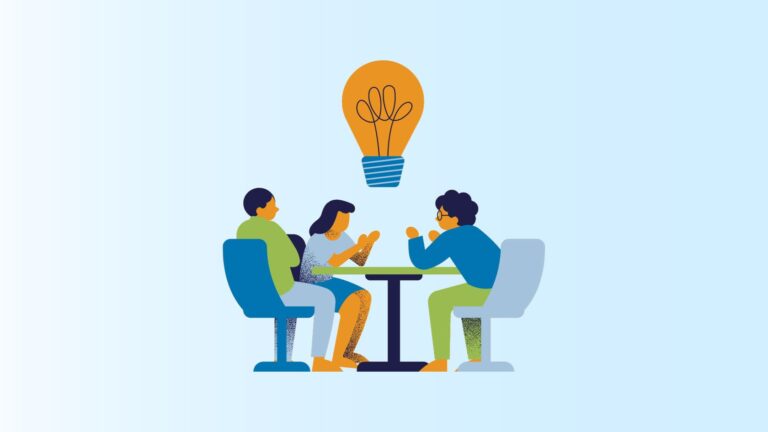Introduction:
In today’s fast-paced and ever-changing market, businesses need to stay agile and adaptive to meet customer needs effectively. One of the key components of achieving this is by incorporating customer feedback into the product development process. Agile customer feedback loops allow businesses to gather valuable insights from users and continuously improve their products. In this article, we will explore what Agile customer feedback loops are and discuss different ways to collect customer feedback in Agile development. We will also delve into several practices to build products not only for the customer but with the customer.
What is Agile customer feedback loop?
An Agile customer feedback loop is a systematic process that enables businesses to gather feedback from customers throughout the product development lifecycle. It involves continuously seeking, analyzing, and incorporating user insights to drive product improvements. The key idea behind Agile customer feedback loops is to involve the end-users in the development process and build products that truly meet their needs.
Different ways to collect customer feedback in Agile development:
1. Design thinking to capture customer need:
Design thinking is a human-centered approach that focuses on understanding the user’s needs and designing solutions based on empathy and experimentation. In Agile development, incorporating design thinking principles allows businesses to gather customer feedback early on and ensure that the product addresses their pain points effectively. Techniques such as interviews, observations, and user surveys can be used to understand the user’s context and gather valuable insights.
2. MVP to test the product usability and value for customers:
Minimum Viable Product (MVP) is a strategy in Agile development that involves creating a basic version of the product with essential features to test its usability and value for customers. By releasing an MVP and gathering feedback from early adopters, businesses can quickly validate assumptions and make informed decisions about further product development. User feedback obtained during this stage helps in refining the product and aligning it with customer expectations.
3. Regular sprint level feedback by Product owner:
In Agile development, sprints are short, time-boxed iterations in which development teams work to deliver a set of features. During these sprints, the Product Owner, proxy for customer, plays a crucial role in sharing feedback to team and in also collecting feedback from stakeholders, including customers. By regularly engaging with customers and incorporating their feedback into the product backlog, the Product Owner ensures that the development team is building the right features and meeting customer expectations.
4. User testing at regular and shorter cadence n:
User testing involves observing and analyzing how users interact with a product to identify usability issues and gather feedback on its performance. Conducting regular user testing sessions, preferably at intervals of not more than a quarter, allows businesses to collect actionable insights and make iterative improvements. By involving real users in the testing process, businesses can identify pain points, understand user behaviour, and refine the product accordingly.
5. Feedback from internal customer-facing teams like implementation team, sales team, and customer support team:
Internal customer-facing teams, such as implementation teams, sales teams, and customer support teams, interact with customers on a regular basis. They possess valuable insights into customer needs, pain points, and feedback. By actively seeking input from these teams, businesses can gain a deeper understanding of customer expectations and make informed decisions about product improvements. Regular feedback from internal teams helps bridge the gap between the development process and customer needs.
Practices to build products not only for the customer but with the customer:
1. Collaboration and co-creation:
Building products not only for the customer but with the customer requires active collaboration and co-creation. By involving customers throughout the development process, businesses can ensure that the final product aligns with their needs and expectations. Techniques such as design workshops, user story mapping, and collaborative prototyping sessions can facilitate this co-creation process, enabling businesses to leverage the collective intelligence of both the development team and the end-users.
2. Continuous customer involvement:
Continuous customer involvement is crucial to building products that truly meet customer needs. By regularly seeking feedback and involving customers in decision-making processes, businesses can ensure that the product remains aligned with evolving customer expectations. This can be achieved through techniques such as user feedback sessions, customer advisory boards, and beta testing programs. Continuous customer involvement helps in building a sense of ownership and loyalty among customers, ultimately leading to higher customer satisfaction and product success.
3. Iterative development and rapid prototyping:
Iterative development and rapid prototyping allow businesses to gather early feedback from customers and make incremental improvements throughout the product development process. By releasing prototypes or early versions of the product and involving customers in the testing and feedback process, businesses can validate assumptions, identify pain points, and make necessary adjustments. This iterative approach enables businesses to respond quickly to customer needs and deliver a product that truly resonates with the end-users.
4. Data-driven decision-making:
Data-driven decision-making involves using customer data and insights to drive product improvements. By leveraging analytics tools, businesses can gather quantitative and qualitative data about user behavior, preferences, and pain points. This data can then be analyzed to identify patterns, make informed decisions, and prioritize product enhancements. Data-driven decision-making ensures that product improvements are based on evidence and align


